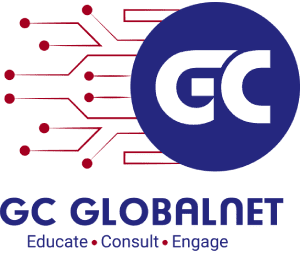Twitter Feed
Transformation Network
The Achilles heel of every transformative business model is their reliance on ever increasing amounts of data that need to be transported quickly across wide area networks and processed at…
Essential Characteristics of Cloud Computing as Digital Transformation
Hybrid IT blends traditional datacenters, managed service providers, and cloud service providers to deliver the necessary mix of information technology services. This IT consumption model enables a composable infrastructure which…
Transformation Innovation
4 Factors Driving Digital Transformation ROI The critical assessment factors for cloud ROI risk probability are the following: Infrastructure utilization Speed of migration to cloud Ability to scale business/mission processes…
Transformation Frameworks
Digital transformation necessitates changes in an organization’s operational processes. According to Harvard, a focus on operations can lead to business process optimization and entirely new revenue streams. Three common routes…
Transformation Infrastructure
Hybrid IT enables a composable infrastructure which describes a framework whose physical compute, storage, and network fabric resources are treated as services. Resources are logically pooled so that administrators need…
Essential Characteristics of Cloud Computing as Digital Transformation
A survey of 2,000 executives conducted by Cognizant in 2016 identified the top five ways digital transformations generate value: Accelerating speed to market Strengthening competitive positioning Boosting revenue growth Raising…
Embrace Transformation
From a business perspective, differentiating business processes and quality customer service are central to overall success. Business leaders must therefore clearly identify and measure how information technology contributes to the…
Computer Vision Advances Zero-Defect Manufacturing
by Kevin L. Jackson Electronics manufacturers operate in a challenging environment. It’s hard enough to keep up with the ever-accelerating rate of change in the industry. Now customers want increasingly…
Real-Time Analytics Power the Roadway of the Future
By Kevin L. Jackson The complexities of citywide traffic are pushing the limits of existing transportation management systems. Outdated infrastructure is based on proprietary, single-purpose subsystems, making it costly to…
Thriving on the Edge: Developing CSP Edge Computing Strategy
Communications Service Providers (CSPs) are facing significant business model challenges. Referred to generally as edge computing, the possibilities introduced by the blending of 5G networks and distributed cloud computing technologies are…
- Do we really know what cloud is?
- Are we confident in knowing what cloud can do?
- Can we explain why the cloud is changing everything?
If 10 people were asked what cloud computing is and why it is important, we would get at least 12 different answers.
- Where is the disconnect?
We know leaders want it. CFOs support it. Strategists recommend it. Technical teams request it. Users demand it. Isn’t cloud easy? Cloud is often associated with acceleration, cost control, added flexibility, increased agility, lower complexity, and rapid innovation. It takes an incredible amount of work and planning to be simple. CIOs are stating that cloud skills are a top hiring priority in 2018.
- What do we need to stay relevant?
- How do we keep up with an industry that is changing every day?
Cloud computing is changing strategies and enabling innovation at every turn. Cloud is changing IT economics. Cloud is blurring the lines and breaking down traditional silos. Cloud is blending roles and redefining boundaries. Regardless of which industry we are in, or the position we hold, cloud computing is changing everything; how we work, how we play, and how we communicate.
Migration seems easy because it can be described as a series of things that get done. Migrations seem tangible: from this to that, from here to there. Transformations, interestingly, are mental and emotional. Transformations require a change in mindset. Transformations require constant data that can be continuously compared to expose insights and establish perceived value. Migrations are planned and executed. Transformations are adopted. Without adoption, transformation fails. Adoption requires a change in mindset, often created from a continuous digestion of highly valued relevant data and insight. This means continuously sensing the environment and continuously changing your actions to better align with goals, which are also changing continuously. We, the authors, call this being:
( This content is being syndicated through multiple channels. The opinions expressed are solely those of the author and do not represent the views of GovCloud Network, GovCloud Network Partners or any other corporation or organization.)
( Thank you. If you enjoyed this article, get free updates by email or RSS – © Copyright Kevin L. Jackson 2016-2018)
Cloud Computing
- CPUcoin Expands CPU/GPU Power Sharing with Cudo Ventures Enterprise Network Partnership
- CPUcoin Expands CPU/GPU Power Sharing with Cudo Ventures Enterprise Network Partnership
- Route1 Announces Q2 2019 Financial Results
- CPUcoin Expands CPU/GPU Power Sharing with Cudo Ventures Enterprise Network Partnership
- ChannelAdvisor to Present at the D.A. Davidson 18th Annual Technology Conference
Cybersecurity
- Route1 Announces Q2 2019 Financial Results
- FIRST US BANCSHARES, INC. DECLARES CASH DIVIDEND
- Business Continuity Management Planning Solution Market is Expected to Grow ~ US$ 1.6 Bn by the end of 2029 - PMR
- Atos delivers Quantum-Learning-as-a-Service to Xofia to enable artificial intelligence solutions
- New Ares IoT Botnet discovered on Android OS based Set-Top Boxes











